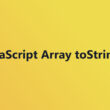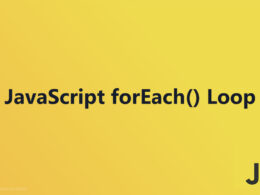The Best Serverless Frameworks for Developers
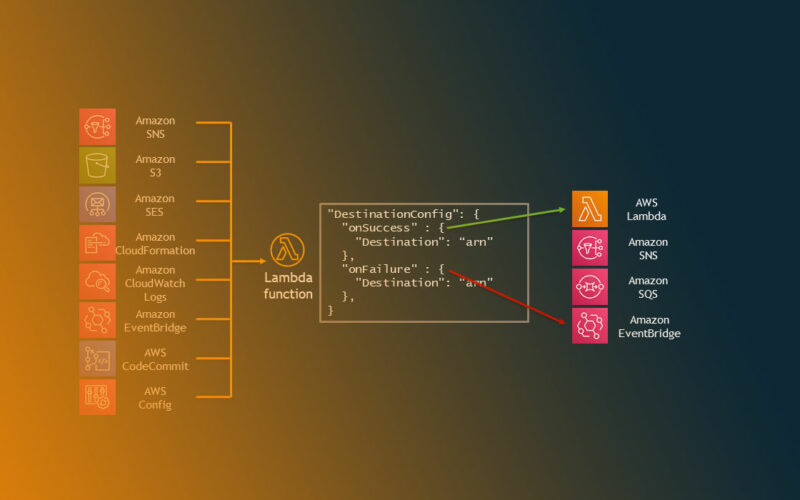
Imagine stepping into the future where infrastructure constraints are a relic of the past. That’s the promise serverless frameworks are making to the tech sphere.
As I’ve navigated the web’s evolving landscape, a paradigm shift towards these frameworks has sparked a revolution that is redefining how applications are built and deployed.
In the heart of this evolution, serverless computing offers a streamlined conduit for developers to unleash creativity without the shackles of server management. This article plummets into the core of serverless technology, dissecting its components and the windfall it brings to cloud computing services.
By journey’s end, a comprehensive understanding of how Function as a Service (FaaS), event-driven architecture, and scalability merge to form the bedrock of serverless frameworks awaits.
Prepare to weave through the intricacies of execution models, cost efficiency, and the labyrinth of serverless security practices.
Accessibility. Efficiency. Innovation. These aren’t just buzzwords; they are the cornerstones of a serverless paradigm, and exactly where this discussion will lead you, revealing a world where cloud-native development is not just mainstream; it’s indispensable.
Serverless Frameworks
| Serverless Framework | Primary Language/Platform | Cloud Provider Support | Notable Features | Ease of Use/Complexity |
|---|---|---|---|---|
| AWS Lambda | Python, Node.js, Ruby, and more | Amazon Web Services | Integrated with AWS services, Automatic scaling | Very integrated with AWS, but may be complex for beginners |
| Serverless Framework | Multiple languages | AWS, Azure, Google Cloud, etc. | Extensive plugin ecosystem, Event-driven applications | User-friendly with extensive documentation |
| Amplify | JavaScript | Amazon Web Services | Rapid development for mobile and web apps, Built-in components for authentication and data | Great for quickstart, but has a learning curve |
| Flogo | Go | AWS, Azure, Google Cloud, and more | Lightweight integration platform, Visual development studio | Requires understanding of Go and Flogo’s model |
| Jets | Ruby | Amazon Web Services | Ruby support for AWS Lambda, ActiveJob integration for background jobs | Ruby-friendly, designed for Ruby developers |
| Webiny | JavaScript, Node.js | AWS | Full-stack serverless CMS, Headless CMS capabilities | Intuitive for JavaScript developers, steep curve otherwise |
| AWS X-Ray | N/A (Monitoring tool) | Amazon Web Services | Performance monitoring, Distributed tracing | Adds monitoring layer to other AWS serverless services |
| IronFunctions | Docker containers | AWS, Azure, Google Cloud, and more | Supports any language via Docker, Open source | Suitable for those familiar with containers |
| Pulumi | Multiple languages | AWS, Azure, Google Cloud, and more | Infrastructure as code, Language-native programs | Flexible and powerful, but requires infrastructure knowledge |
| Serverless Application Repository | N/A (Application repository) | Amazon Web Services | Pre-built serverless applications, Easy deployment | Straightforward for AWS, limited to pre-built apps |
| Architect | JavaScript, Node.js | AWS | Simple manifest file, Infrastructure as text | Easy for simple deployments, less control for complex cases |
| Zappa | Python | AWS | Designed for Python web apps, Easy Django and Flask integration | Python-specific, simple for developers familiar with Python |
| AWS SAM (Serverless Application Model) | YAML/JSON (Definition) | Amazon Web Services | Framework for building serverless applications on AWS, Local testing and debugging | Streamlined for AWS, good for getting started with serverless |
AWS Lambda
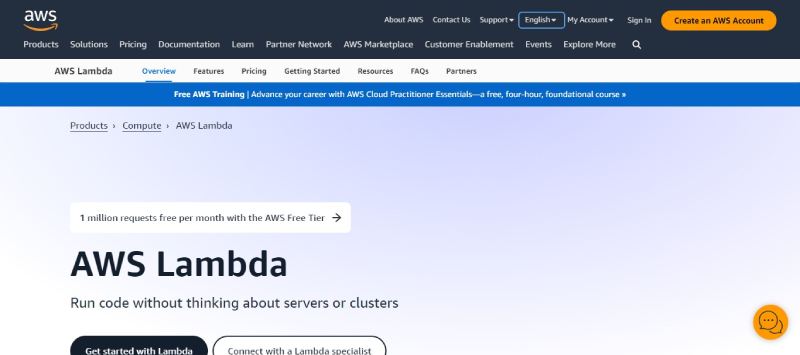
AWS Lambda—where server-side logic basks in the glow of true cloud computing. Define your function; AWS handles the rest. Scaling is automatic, as is the cost efficiency of the pay-as-you-go model.
Best Features
- Auto-scaling functionality
- Pay for actual compute time
- Seamless integration with AWS services
What we like about it: It cannot be overstated—no servers to manage, ever. This fact alone elevates Lambda to the upper echelons for developers seeking to unravel the complexities of server maintenance.
Serverless Framework
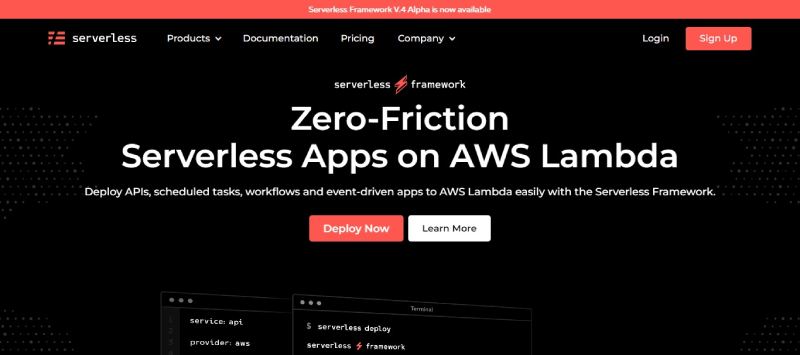
Serverless Framework is an ace up the developer’s sleeve. By abstracting cloud services into easy commands, this open-source software has transformed API Gateway integrations and resource provisioning into a walk in the park.
Best Features
- Streamlined deployment
- Vast plugin ecosystem
- Provider agnostic
What we like about it: Its capacity to flit between cloud providers with ease hands developers the golden key to a multi-cloud strategy, making it a beacon of flexibility in a fenced-in world.
Amplify
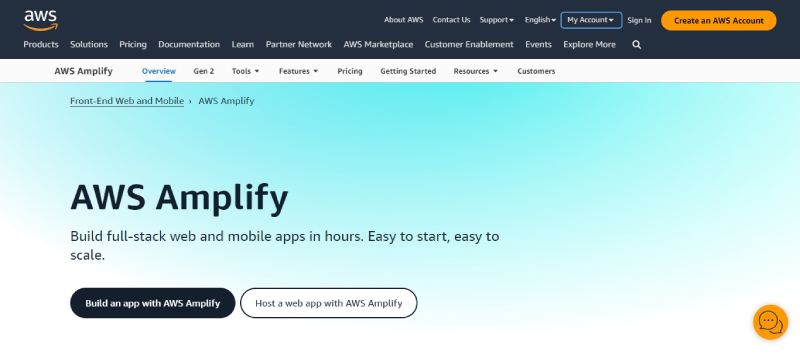
Amplify whispers sweet nothings to mobile and web developers. This set of tools and services from Amazon Web Services makes bootstrapping and managing serverless applications as natural as drawing breath.
Best Features
- Easy back-end to front-end connection
- Real-time updates with a few lines of code
- Authentication and data storage simplified
What we like about it: The seamless combination of a serverless framework and front-end libraries to amplify your productivity beyond regular bounds; a mystic portal to efficient app deployment.
Amazon Web Services
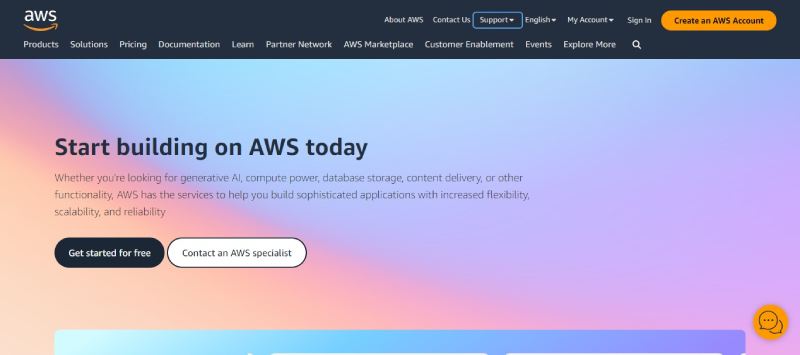
Amazon Web Services is the colossus, the behemoth, the sprawling digital landscape where anything seems possible. It’s not merely a place but a canvas for architecting, deploying, and scaling serverless wonders.
Best Features
- Breadth of services
- Global reach of infrastructure
- Deep integration with serverless
What we like about it: Its capacious bounty of integrated services. With AWS, serverless is not a mere facet but a sphere, where the ecosystem’s synergy reveals unchartered potentials for developers.
Flogo
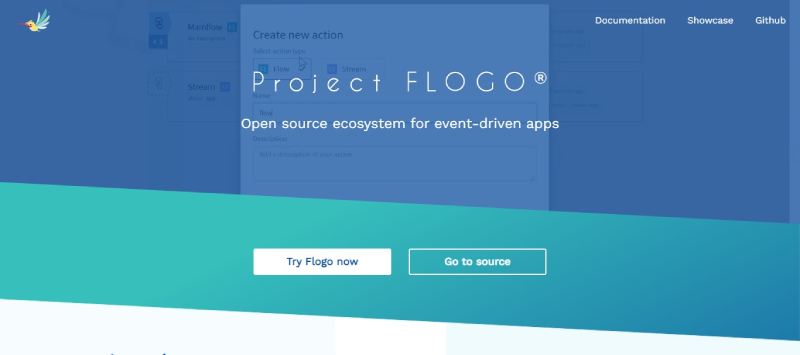
Enter Flogo, where the lightness of serverless meets the rigor of enterprise integration. A Go-powered open-source framework that dances delightfully well within memory-constrained environments.
Best Features
- Ultra-lightweight processes
- Native IoT integration
- Visual development with a no-code approach
What we like about it: Flogo‘s frugal appetite for resources makes it a ninja in the world of serverless. It’s a fit for the future, for IoT, and for lightweight aspirations.
Jets
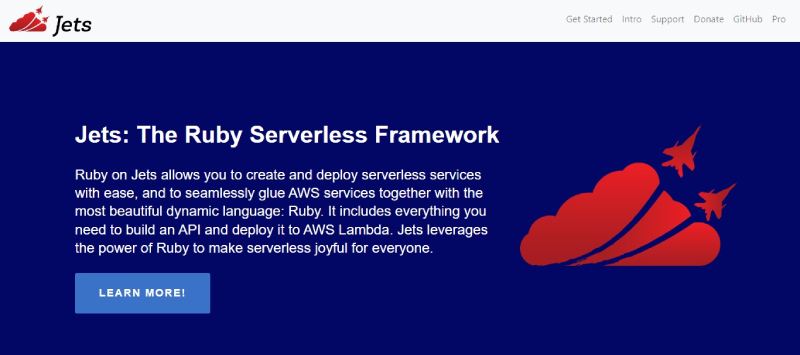
Ruby lovers, take flight with Jets. Tailor-made for AWS Lambda, this Ruby serverless framework leverages Serverless Application Repository to deploy nifty apps with the grace of an aeronaut.
Best Features
- Ruby-friendly syntax
- ActiveJob for background jobs
- Built-in database migrations
What we like about it: The comfort of home—Ruby syntax married with serverless. It’s a ruby red jewel in the crown of cloud computing, bringing elegance to serverless endeavors.
Webiny
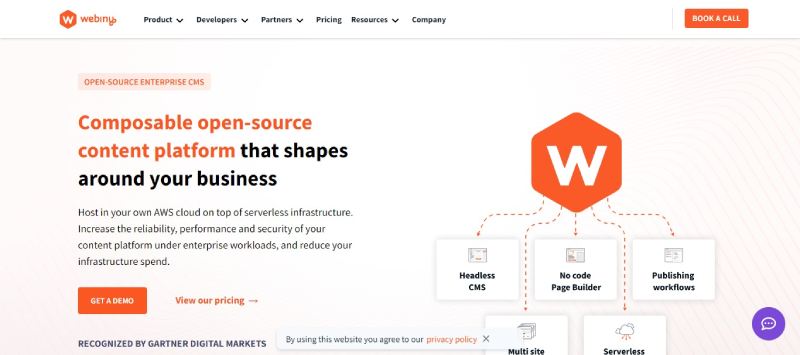
Webiny paves the path for serverless content management. With a headless CMS that leverages serverless technologies, it’s crafted to thrust scalability and dev experience into the stratosphere.
Best Features
- Serverless headless CMS
- Multi-tenant SaaS builder
- Full developer control
What we like about it: Its purpose-built serverless environment tailored for content-rich applications. Webiny stands out for delivering content at scale with a flair for cloud-native development agility.
AWS X-Ray
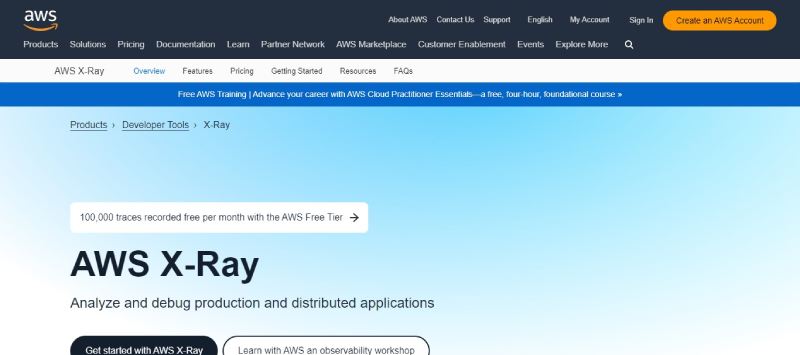
AWS X-Ray injects itself into the bloodstream of serverless apps, radiating insights into their performance and health. A diagnostic juggernaut that peels back the layers to lay bare the inner workings of your application.
Best Features
- Detailed performance analysis
- Request tracing across AWS services
- Root cause identification for issues
What we like about it: Its razor-sharp tracing cuts through the fog of distributed applications. Unraveling performance mysteries with AWS X-Ray is like wielding the sword of truth in the battle for optimization.
IronFunctions
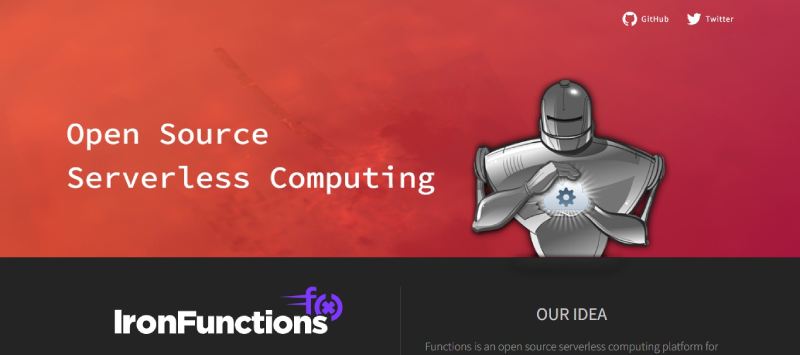
IronFunctions steps up as the dark horse, an open-source serverless platform that treats Docker as its playground. This allows devs to wield containerization with the ease of serverless.
Best Features
- Docker-based functions
- Platform agnostic
- Simplistic scalability
What we like about it: It speaks the language of containers and serverless in one breath. IronFunctions merges the worlds with a pragmatism that’s rare and potent.
Pulumi
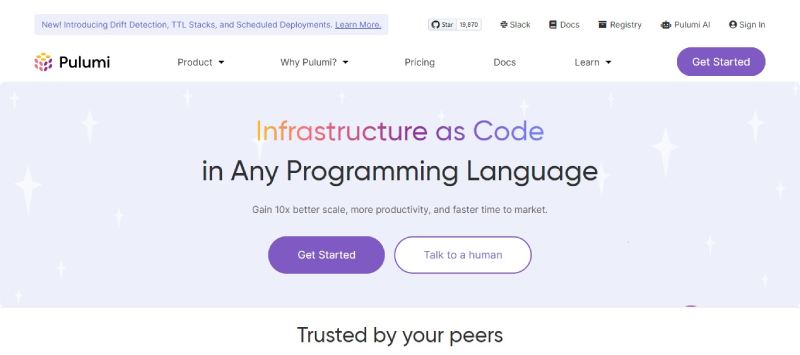
Pulumi is where infrastructure as code (IaC) and serverless frameworks tangle passionately. This multi-language cloud development platform lets you craft, deploy, and manage cloud infrastructure with the familiarity of your favorite programming language.
Best Features
- Multi-language and multi-cloud support
- Real code for infrastructure management
- Continuous delivery for cloud apps
What we like about it: Pulumi breaks the chains, liberating infrastructure from the esoteric grip of domain-specific languages, and welcomes a world where the serverless cloud is yours to command.
Python

Widely adored, Python snakes its way into the serverless domain with elegance. Its clear syntax, extensive libraries, and community support make it a cherished cohort for serverless applications.
Best Features
- Ease of learning and use
- Rich ecosystem of libraries
- Compatibility with serverless platforms
What we like about it: Its swift embrace of serverless elegance. The language’s simplicity in serverless architectures is akin to poetry; it’s the vernacular of choice for many a cloud maestro.
Serverless
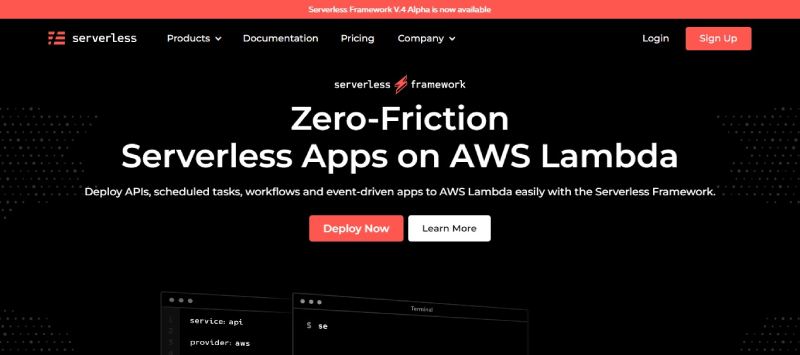
Echoing its name, Serverless is the battle cry of developers wishing to escape infrastructure management. It champions a CLI that’s as powerful as it is insightful, for deploying apps with a flick of the wrist.
Best Features
- Smooth AWS service orchestration
- Simplified scalable apps
- Versatile plugin ecosystem
What we like about it: The ease with which one can wield the power of the cloud. Serverless stands as the gateway to a realm where deployment dread is no longer.
Serverless Application Repository
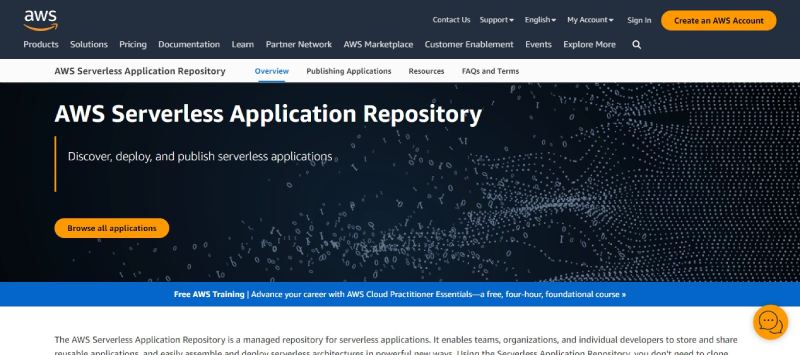
Amazon’s Serverless Application Repository is a treasure trove, rich with back-end resources. It’s a bazaar where developers can both share and deploy serverless code snippets, blueprints, and components.
Best Features
- Community-driven resource pool
- One-click deployment of serverless apps
- Integration with AWS Lambda
What we like about it: Its marketplace of serverless sorcery where sharing is the credo. A quick dip into the Serverless Application Repository and you emerge with a pre-forged back-end, ready to deploy.
Architect
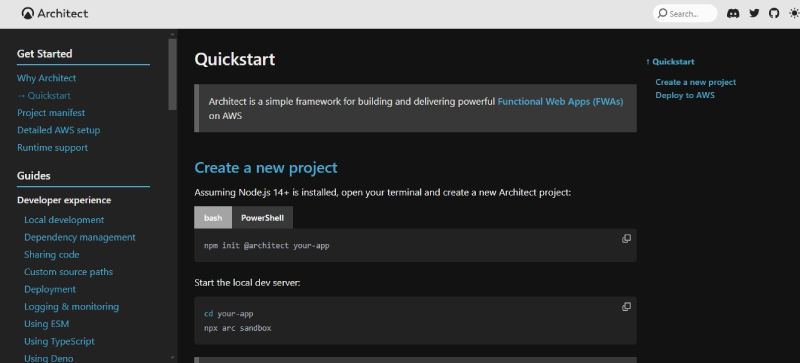
Sharpen your serverless craft with Architect. It’s all about simplicity here, a framework that allows you to build cloud-native applications using plain text Arc files.
Best Features
- Simple Arc file manifestation
- Rapid deployment cycles
- Integration with AWS cloud services
What we like about it: Its ability to translate your dreams directly into cloud infrastructure. Architect is the epitome of less-is-more in the serverless realm.
Aws node dynamodb backup
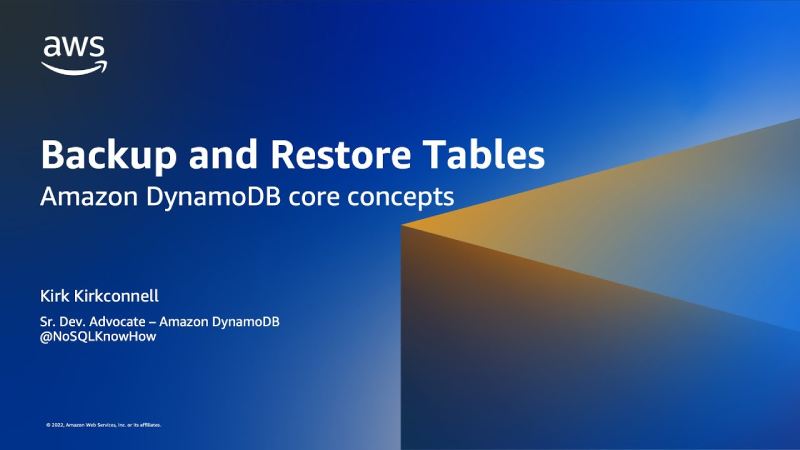
Preserve your DynamoDB data effortlessly with aws node dynamodb backup. This toolkit simplifies backing up and restoring your precious data to and from Amazon S3, integrating seamlessly into your serverless strategy.
Best Features
- Automated backup and restore jobs
- Integration with S3 for secure storage
- Ease of use within AWS environment
What we like about it: Its unsung role in safeguarding data without fuss. The aws node dynamodb backup tool is that reliable comrade every prudent architect needs.
FAQ On Serverless Frameworks
What Exactly Are Serverless Frameworks?
Serverless frameworks catapult the mundane task of server management into the cloud purview. They provide an infrastructure where code execution is handled entirely by cloud service providers, tapping into services like AWS Lambda or Azure Functions.
It’s seamless, scalable, and you only pay per use. This shifts focus from maintaining hardware to crafting top-notch code.
How Do Serverless Frameworks actually Work?
Picture a symphony of cloud components playing in unison, orchestrated by events. When a certain event is triggered—say, a file upload API Gateway—the designated function awakens, executes, then rests. It’s an on-demand service model wearisome server upkeep becomes a tale of the olden days.
What Benefits Do Serverless Computing Offer?
Serverless computing boasts unparalleled scalability and cost-effectiveness since you’re charged solely for the runtime of functions.
It streamlines deployment, fosters innovation by freeing developers from infrastructure concerns, and auto-scales to meet demand—a laudable fit for unpredictable workloads.
Where Do Serverless Frameworks have Shortcomings?
Despite their sheen, serverless frameworks aren’t a panacea. Challenges simmer just beneath the surface. There’s the dreaded cold start—delayed executions when functions first wake.
Plus, debugging becomes trickier, local development may hiccup, and long-running tasks might bump against execution time limits.
Can Serverless Frameworks Support Stateful Applications?
At face value, serverless frameworks and stateful apps lock horns. After all, serverless prefers stateless operations—short, standalone excursions.
That said, coupling with other services, leveraging event sourcing, or employing cloud-native databases, one can architect stateful wonders in a serverless world.
What’s the Role of APIs in Serverless Architectures?
APIs serve as the unassuming maestros of serverless orchestration, enabling swift and responsive communication between disparate cloud services and serverless functions. Essentially the lifeblood, they allow serverless applications to react to web requests, exuding restfulness.
How Does Serverless Frameworks Ensure Security?
One may think scattering the workload hampers security. On the contrary, serverless security practices are robust, passing the responsibility baton to providers.
Incorporating identity access management, encryption, and well-fashioned function policies engage a fortified barrier against digital marauders.
Are Serverless Frameworks Suitable for Complex Applications?
Complexity doesn’t deter serverless; it coaxes out its versatility. Complex apps suited for microservice patterns thrive, dissected into myriad functions that event-driven architectures adeptly manage. It’s a dance of discrete, loose-coupled steps—each independent yet part of an elaborate tango.
How Do Serverless Frameworks Impact Developer Productivity?
Unshackle a developer from server management, and you unleash untapped productivity. Serverless frameworks facilitate this freedom, whisking away operational duties so developers can hone in on creating functional marvels.
It catalyzes deployment and iteration, effectively shrinking the distance between concept and launch.
How Is Serverless Technology Evolving?
Serverless technology is not static; it’s a creature of swift evolution. Contemporary advancements see multi-cloud strategies gain traction and hardware boundaries blur with edge computing.
Tomorrow brings broader adoption, richer features, and an expansive embrace by industries eager for digital metamorphosis.
Conclusion
In the mosaic of serverless frameworks, each tile – from FaaS to event-driven architecture – tessellates to redefine application development. This journey, intricate and nuanced, has unwound the skeins of cloud computing, leaving us entwined in the possibilities that serverless technologies present.
- Flexibility? Check.
- Scalability? Without question.
- Cost-efficiency? Evident with every function invoked.
As the curtain falls, it is unmistakable that serverless is not a mere trend; it is a steadfast evolution in the fabric of software engineering. This article has trekked through the delights and shadows of serverless—the shrewd economics of pay-per-use pricing models, the simplicity of automatic scaling, and the puzzles posed by cold starts.
Remember, serverless is a journey, not a destination. Fixate upon cloud-native development with an open mind. Serverless is burgeoning, harnessing multi-cloud strategies and growing ever more synonymous with agility and innovation—in the cloud and beyond.
If you liked this article about serverless frameworks, you should check out these articles also:
- Comics and Stories: Top Apps Like Webtoon for Readers
- Flexible Payment Plans: Discovering Apps Like Sezzle
- Hire Local Professionals: Apps Like Thumbtack Reviewed
- Share Creatively With Apps Like Vimeo - June 27, 2024
- Converting Arrays with JavaScript Array toString() Method - June 27, 2024
- 4 Best Free AI Coding Tools for Developers - June 27, 2024


